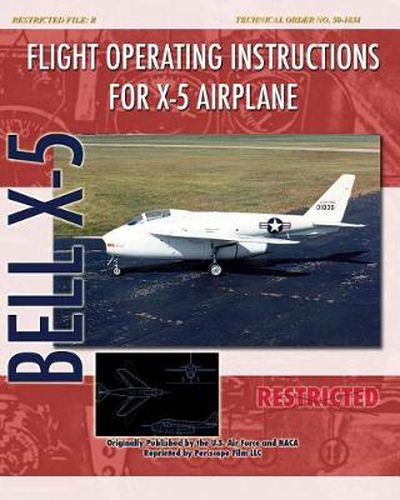Readings Newsletter
Become a Readings Member to make your shopping experience even easier.
Sign in or sign up for free!
You’re not far away from qualifying for FREE standard shipping within Australia
You’ve qualified for FREE standard shipping within Australia
The cart is loading…






This title is printed to order. This book may have been self-published. If so, we cannot guarantee the quality of the content. In the main most books will have gone through the editing process however some may not. We therefore suggest that you be aware of this before ordering this book. If in doubt check either the author or publisher’s details as we are unable to accept any returns unless they are faulty. Please contact us if you have any questions.
An outgrowth of the Third Reich’s Emergency Fighter Program, the Messerschmitt P.1101 jet fighter featured a radical new design in which the sweep of the wing could be altered in flight. Captured by the Allies before it could be completed, the P.1101 was sent to the United States where it inspired the Bell X-5. Produced by a team led by Robert J. Wood, the X-5 was a true variable geometry platform that offered in-flight wing positions of 20 , 40 , and 60 . Far more complex than the P.1101, the X-5 utilized a jackscrew to move the wings along horizontal rails, and disc brakes to lock the wing into position. Two X-5s were built, and almost 200 flights were made between 1951 and 1955. While the design initially showed promise, the X-5 had a tendency to go into a violent spin. That characteristic led to the crash of the second prototype in 1953, an accident that killed test pilot Capt. Ray Popson. The accident led to the cancellation of tentative plans to mass produce a modified design as a low-cost tactical fighter. Still, the X-5 successfully demonstrated the utility of a swept-wing design, and inspired a whole generation of aircraft from the F-111 and F-14 to the B-1. Originally produced in 1951 by the United States Air Force and NACA, this flight operating handbook was originally restricted. It has now been declassified and made available in its entirety. Please note, due to the age and rarity of this manual, some images may be substandard.
$9.00 standard shipping within Australia
FREE standard shipping within Australia for orders over $100.00
Express & International shipping calculated at checkout
This title is printed to order. This book may have been self-published. If so, we cannot guarantee the quality of the content. In the main most books will have gone through the editing process however some may not. We therefore suggest that you be aware of this before ordering this book. If in doubt check either the author or publisher’s details as we are unable to accept any returns unless they are faulty. Please contact us if you have any questions.
An outgrowth of the Third Reich’s Emergency Fighter Program, the Messerschmitt P.1101 jet fighter featured a radical new design in which the sweep of the wing could be altered in flight. Captured by the Allies before it could be completed, the P.1101 was sent to the United States where it inspired the Bell X-5. Produced by a team led by Robert J. Wood, the X-5 was a true variable geometry platform that offered in-flight wing positions of 20 , 40 , and 60 . Far more complex than the P.1101, the X-5 utilized a jackscrew to move the wings along horizontal rails, and disc brakes to lock the wing into position. Two X-5s were built, and almost 200 flights were made between 1951 and 1955. While the design initially showed promise, the X-5 had a tendency to go into a violent spin. That characteristic led to the crash of the second prototype in 1953, an accident that killed test pilot Capt. Ray Popson. The accident led to the cancellation of tentative plans to mass produce a modified design as a low-cost tactical fighter. Still, the X-5 successfully demonstrated the utility of a swept-wing design, and inspired a whole generation of aircraft from the F-111 and F-14 to the B-1. Originally produced in 1951 by the United States Air Force and NACA, this flight operating handbook was originally restricted. It has now been declassified and made available in its entirety. Please note, due to the age and rarity of this manual, some images may be substandard.